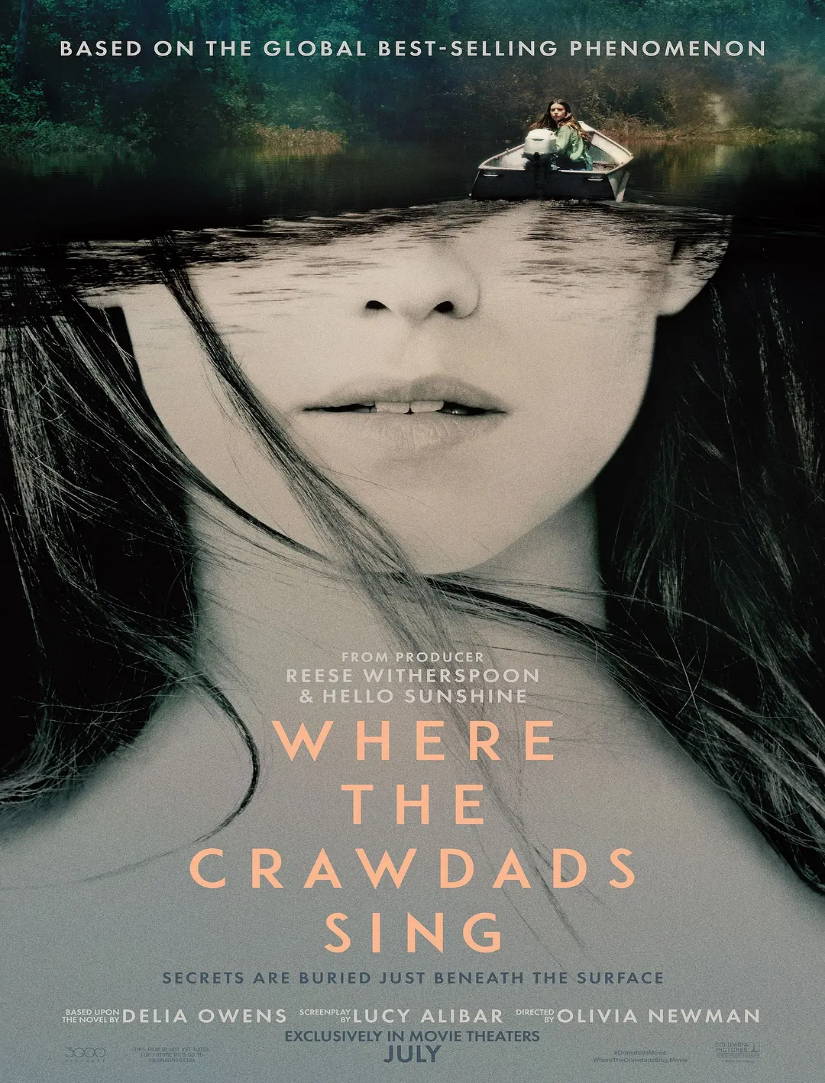The experience of this movie is actually not very well described.In the end, it is a female growth story in the shell of a suspense film, and the two parts of the content intertwined together, the overall effect …… how to say it, a little bit of both ends did not do a good job of feeling.The suspense part needless to say, after a significant reduction, the film embodies the case of decryption is simply uninteresting, the whole in watching the plaintiff and the defendant on both sides of the singing duo, all the clues are directly on the table at a glance. In this process, except for the prosecution’s lawyers and Chase’s mother, you can’t even see how much the so-called “stereotypes” of Kia by the residents of the town have affected the case, there are good and just lawyers in the courtroom, there are impartial judges, there are silent and calm jury, the whole trial process ended without a hitch. So let’s focus on the core of the film: the story of a woman growing up.
The Chinese title of the film is “The Girl from the Swamp”, which I think is a very good translation, much better than the direct translation such as “the place where the clarkfish sings”. In the original, the relationship between Kia and the swamp is an important thread that runs through the entire novel, and every stage of Kia’s life and every growth she experiences is inseparable from the swamp. It is the swamp that creates the character of Kia, shapes her character, and gives her knowledge and strength.
But unfortunately, in the film, the “swamp” is only used as a backdrop for the story and a spectacle, and the inextricable link between Kia and the swamp degenerates into a concept, and because it is not supported by details, much of the film’s plot becomes puzzling. This is the most disconcerting part of the film for me, and one of the most central issues in my opinion, and I will use many examples later to explain this point.
For example, here, when Kia’s father left, Kia in the home to check the remaining supplies with this line of narration, I believe if you have not read the original words must not understand the meaning.
“I don’t know how to do life without grits.” I don’t know how this sentence will be translated when it is released in theaters in China, but I see that a subtitle team translated the word grit as “oatmeal”– I don’t know if it’s right, but don’t think this sentence means Kia can’t eat after her father leaves. That’s not the case at all. In fact, this stuff is not for her to eat herself, but to feed the birds. What Kia is trying to convey in this sentence is that without the grain used to feed the birds, she is afraid that the birds will leave her like everyone else, and this pain is something she can’t stand, hence why she doesn’t know how to do life without.
But why does she value her relationship with the birds so much? The family is going to be unable to uncover the pot, not worrying about their own lack of food, but still thinking about bird food? In fact, this is because, according to the original depiction, Kia grew up treating birds as her friends and family, whenever she felt lonely, no one to rely on, no one to talk to, she would go to the beach there, spend time with the birds and talk to them. But there is no explanation for this in the movie, just a solitary line thrown out, leaving people unsure. And such as the original “cutting” the important details of the place is also full of over the top.
For example, as a swamp daughter, how did Kia acquire knowledge from nature since childhood? The film’s portrayal of this is very weak.
In one episode, Kia is encouraged by Mabel, the owner of the grocery store, to come to school to receive an education, but she is quickly ridiculed by her classmates, so Kia ends up staying at the school for only one day before fleeing the place and never going back, at which point a line from Kia’s narration appears in the film: “I think I’d better learn from the wilderness “. But the strange thing is that the picture is connected to the shot of Kia and her father going fishing together, expressing the plot of father and daughter trying to get closer to each other.
In other words, the film only introduces the concept of “Kia learning from nature”, and then breaks the trail, and the audience never sees how Kia learns from the swamp again (maybe digging for mussels counts as one?). The audience never sees how Kia learns from the swamp after that (maybe digging for mussels?). The director doesn’t even bother to show a continuous shot of Kia’s daily life in the swamp, so that the audience can see the image of Kia and the swamp as one, to build up the concept of “the girl is to understand the world through the observation of nature” in the mind.
The lack of this aspect causes the intention expressed in some scenes in the plot to be greatly reduced, a typical example being the little game in which Kia and Tate exchange feathers with each other.
This is supposed to show how Kia, representing the “wilderness,” and Tate, representing the “town,” break the barriers of their own environment and eventually meet and fall in love, an important plot point that drives the story forward. But the film’s interpretation of this bridge is quite rigid. Kia is excited to see the feathers stuck in the stump from the very beginning, and then soon starts exchanging gifts with the unidentified other, which seems to create no obstacles in between. But in fact, according to the book’s description, Kia, although she loved the feathers she received, did not understand why a boy would give himself something and had to try to understand through the lens of nature as well as animals. She has witnessed males giving gifts to females to woo them, and thus has a vague guess at the meaning behind Tate’s behavior: this exchange between the two is like an animal courtship ritual, and this is the knowledge that the swamp gives Kia. She may not be able to hold her own feelings or understand the changes she is experiencing, but she finds the fulcrum to understand the world and to communicate with Tate from what she knows in nature.
So such a lack of details, I’m afraid that the audience until the final case is deciphered can not accept, a whole day only know painting, digging mussels girl, how suddenly to commit a perfect crime? This behavior behind the mental state contained in the knowledge base, in the end from where? As well as more puzzling is why Kia after the arrest, always an indifferent, passive cooperation attitude, let Tom lawyer labor and effort.
In fact, the film gives a very ambiguous explanation on this point. When Kia hears Tom’s suggestion that she testify on her own behalf, she says in a tone of resentful contempt: “I will never let the “outside world” define me, it’s not judging me, it’s judging them.
This declaration, which is not contextualized, contradicts the character’s previous lines, because a second before Kia was saying, “I don’t hate them. In fact, based on the original story, Kia’s state of mind at this point is not simply “against the outside world”.
The deeper reason she refuses to confess is that she doesn’t feel she’s done anything wrong, it’s a food chain based morality given to her by the swamp: every creature does what it has to do to survive. When an animal feels threatened, it doesn’t complain to someone or leave its territory, but defends it and kills if necessary. So for Kia, killing Chase is not even a “crime of justice”, no, it is not a crime at all, “remove the threat” is a natural law, as natural as eating and drinking water.
So throughout the case, Kia showed an unusually calm, you Tom lawyer busy before and after I am grateful, but you let me apply for a plea to reduce the sentence? No, go to self-defense? No way. She knows her own morality and the normal human society is completely different, you and I are two worlds of people, why I have to follow your rules and laws to accept the trial?
Some might say that the film actually has two places where the logic of Kia’s behavior is explained, one is in the opening narration.
I only know various ways of surviving in it
But as I said before, these two lines do not have a positive effect on the audience’s understanding of Kia’s inner world (perhaps it helps to create a suspenseful atmosphere) because the whole film lacks relevant plots to echo, so they only seem abrupt and fanciful.
I can’t help but mention a few words that may offend people, that is, I think the casting of the character of Kia is not suitable, casting problems.
Although it is undeniable that the film as Kia Daisy Edgar Jones eyebrows green mountains, pupils cut water, can be said to be very beautiful, but, so delicate skin, elegant makeup, long hair, coupled with a moral dress, which is clearly a middle-class family of the kind of good girl cultivated in the world, where it looks like a break from human society, growing up in the precarious She is less of a primitive wildness, without that unrefined simplicity and innocent energy. At this point, even the actor playing Kia is more realistic and natural than Daisy.

